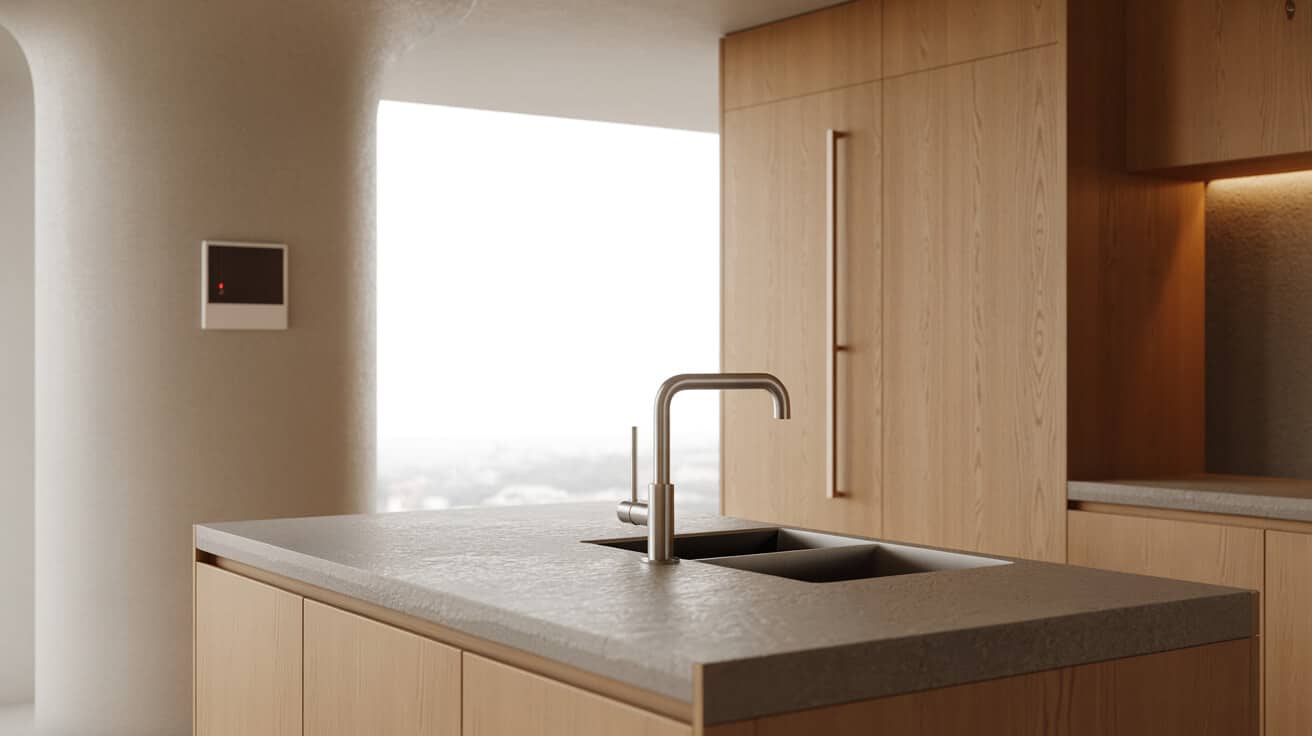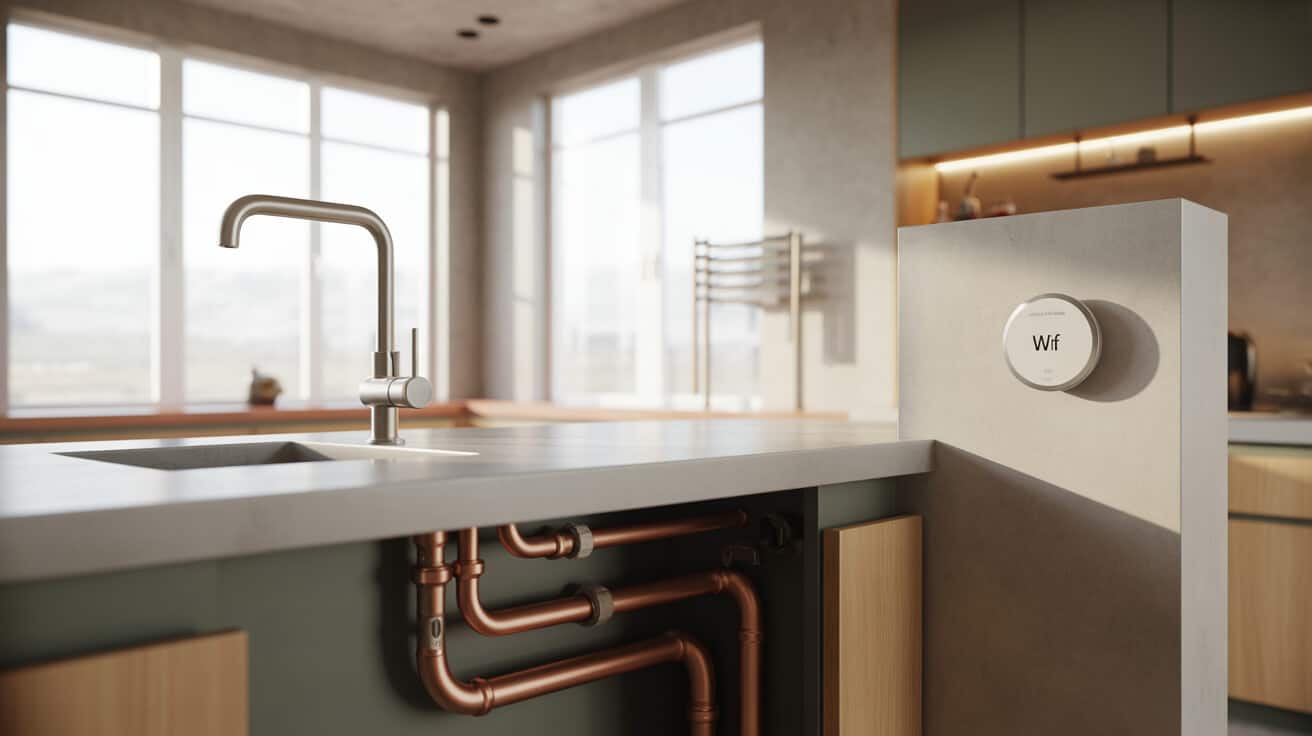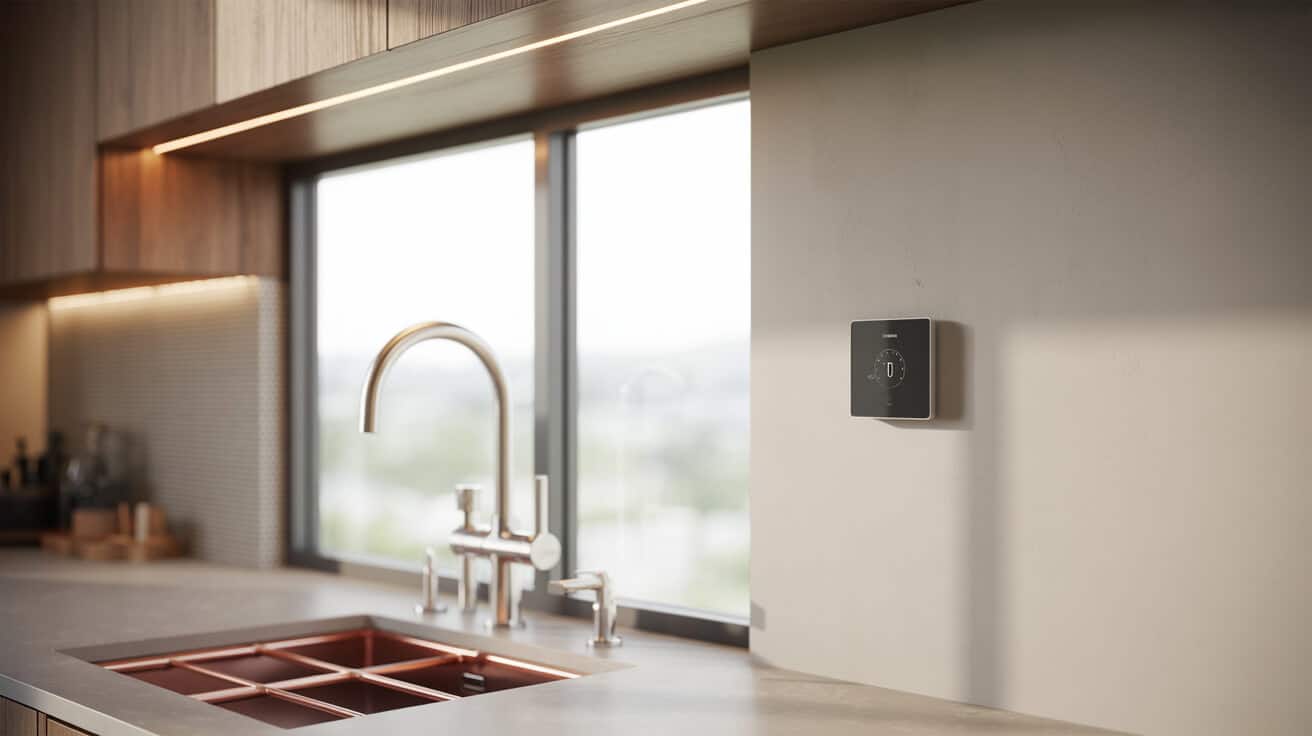Introduction of WiFi thermostat systems coincided with a surge in connectivity expectations for building controls, pushing traditional models toward real-time, user-adjustable scheduling, and intelligence. These technologies have become central to contemporary plumbing and heating service offerings, supporting not just basic comfort but granular control, ecological optimization, and digital documentation needs for homeowners, landlords, property managers, and facilities professionals. Companies such as Plumbers 4U have embraced this shift, embedding technical guidance, selection, commissioning, and compliance management as core elements of your service journey.
Etymology or name origin
The word “thermostat” fuses the Greek “thermos” (heat) with “statos” (stationary), originally applied to mechanical regulators built to stabilise environmental temperatures. By the late 20th century, the label covered a diverse set of time controllers and programmable devices. “WiFi” stems from “Wireless Fidelity,” denoting the 802.11 suite of networking standards, becoming an industry qualifier for smart, wireless connectivity in smart home and building technology. The union of these terms signals the technological leap from isolated, manual control to programmable and networked intelligence.
Overview and context
WiFi-enabled thermostatic controls occupy a pivotal position in contemporary environmental management. Functioning as both endpoint sensor and command centre, these devices orchestrate energy output in response to either scheduled or adaptive criteria while remaining accessible via internet-connected interfaces. Plumbing and heating companies act as intermediaries, translating highly technical features into user-centric installations, customising device selection to match your property’s system type, regulatory zone, and energy habits. Increased legislation, energy cost pressures, and the expansion of remote work drive demand, particularly among those seeking to optimise time away or rental management with programmable setpoints and automation.
Remote control is no longer a luxury; for many, it is an expectation. The movement toward data visibility—allowing you to monitor, analyse, and optimise your energy consumption—has also repositioned installation providers as technology stewards, tasked with ensuring device longevity, regulatory compliance, and your confidence in long-term support.
History
Early methods
Initial thermostatic devices relied on bimetallic strips or expanding fluids to actuate mechanical switches, toggling boilers or radiators to maintain set temperatures. By the 1980s, digital timers brought elementary programmability to central heating, offering limited flexibility within manually-wired networks. Building services at this time focused predominantly on robust, repeated actions, requiring manual adjustment and offering little user-driven adaptation.
Digital transition
With the proliferation of digital integrated circuits in the 1990s, microprocessor-powered programmable thermostats became affordable and prevalent. Early devices introduced additional schedule flexibility, basic overrides, and holiday modes, but user interaction remained localised—roomside buttons and LCD displays. Nonetheless, these improvements laid groundwork for later advances by standardising 24V or 230V switching interfaces, a necessary precursor for compatibility with smarter controls.
Contemporary evolution
The paradigm shift began with the emergence of smartphones and home WiFi networks in the late 2000s. By 2011, WiFi-enabled thermostats entered the residential market, soon followed by models targeting commercial and multi-tenant environments. These innovations enabled device pairing with apps, granular remote-scheduling, geofencing-based automation, and data extraction for behavioural analytics. Open protocol developments, such as OpenTherm for boiler communication, further standardised interfaces, lowering the complexity for companies such as Plumbers 4U to offer advanced device integration as part of your maintenance or retrofit workflow.

Concept and description
Device architecture
Typical WiFi thermostats comprise the following components:
- Temperature sensors: Digital thermistors or thermocouples measure ambient or primary circuit temperatures.
- Digital display and input controls: Devices may use capacitive touchscreens, rotary dials, or buttonpads for local operation.
- Control relays: Interfaces connect stat output to boiler, pump, or manifold (commonly using volt-free, 230V switched, or OpenTherm digital signals).
- WiFi module: An onboard IEEE 802.11 chipset enables communication with your property’s network, occasionally combined with fallback protocols for resilience.
- Processor/logic board: Orchestrates schedules, learning algorithms, and network handshakes.
- Power supply: Derived from mains or batteries, supporting continuous or sleep-cycle operation.
Physical design varies, from slim, wall-mounted units (common in retrofits) to standalone, desk-placed hubs for larger, zoned networks. Portable or satellite sensors extend control to heterogeneous environments, improving comfort precision and multi-persona usage.
Hot water and heating system interfaces
Compatibility is dictated by your heating plant’s specifics—combi, system, or regular boilers, heat pumps, or underfloor loops. Many modern devices integrate relay, voltage, and digital protocol options, and installers adapt approach to your location’s voltage and wiring conventions. Modular backplates align with legacy patterns, simplifying upgrades and minimising wall damage. App-driven onboarding directs the connection sequence: from stat to WiFi to cloud service, with parallel bootstrapping for paired radiator valves or manifold actuators.
User interface and cloud services
Upon first activation, the user pairs the thermostat with a mobile app, creates a secure account, and establishes device identity on your local network. Schedules, settings, and user permissions are stored both on-device and, where permitted by privacy settings, on secure vendor servers. In-app dashboards visualise performance (e.g., 24-hour, 7-day graphs), push firmware updates, and alert users—or service providers such as Plumbers 4U—of anomalous operation or upcoming maintenance events.
Functionality, purpose, and applications
Domestic use
Remote programmable control enables scheduling that adapts to your household’s presence and absence patterns. Geofencing features deactivate heating as you depart and reactivate before your arrival, minimising waste and maximising comfort. Learning algorithms analyse manual overrides and infer preferred settings, automating optimization over time.
Commercial and public buildings
Facility managers harness the ability to zone schedules for departments or room groups. Compliance with legal heating minimums, cost containment, and data auditability become feasible through historical usage analytics and real-time device health reports. The software backbone, whether cloud-hosted or on-premises, supports alerting for exceptions (e.g., faults, connectivity loss, unauthorised changes), enhancing your organisation’s operational predictability.
Zoning and multi-device integration
Your organisation may benefit from room-by-room stats, smart thermostatic radiator valves (TRVs), or integration with underfloor heating manifolds, all coordinated by a primary hub device. Multi-device systems segment heating by floor, occupancy, or usage pattern, addressing both comfort and savings imperatives.
App, voice, and remote management
Smartphone and tablet interfaces, as well as integrations with voice assistants, empower you to adjust setpoints, change modes, or respond to critical alerts with immediacy. Permission tiers support multi-user properties, distinguishing between admin (e.g., landlord or facilities head) and user (e.g., tenant, employee) rights.
Classifications and types
By communication protocol
- WiFi-based: Standalone, direct-to-router devices, typically favouring consumer markets.
- Hybrid wireless: Supplementing WiFi with radio-frequency, Zigbee, or other mesh overlays for auxiliary components.
- Bus protocol: OpenTherm supports direct, digital boiler communication, enabling continuous modulation rather than simple on/off switching.
By system compatibility
- Boiler-centric: Most residential/retrofit instals, supporting combi and system an hydronic heating with hot water overrides.
- Heat pump/UFH-ready: Features support for low-temperature, high-mass applications, including precise curve management.
- Mixed-use/commercial: Integrating with building management systems, supporting legacy voltage patterns, and flexible accessory expansion.
By instal method
- Wired retrofits: Utilise existing wall record, respond to legacy wiring layouts.
- Wireless receiver: Places main stat where signal is optimal; boiler or plant room module translates command to system bus.
- Portables and satellites: Expand to less accessible parts of your property (e.g., outbuildings, server rooms) for more uniform management.
Major brands and accessory ecosystem
Product lines adapt features to market and compliance context; manufacturers such as Honeywell, Tado°, Google Nest, Drayton, Netatmo, and Hive prioritise different balances of learning algorithms, UI design, and ecosystem integration. Devices are often sold with expansion modules—TRVs, humidity sensors, or secondary stats—enabling you to extend and customise zone coverage as requirements evolve.
Systems, tools, and methodologies
Pre-installation survey
An initial technical audit by providers such as Plumbers 4U ensures the compatibility of your heating plant, assesses WiFi/network coverage in stat installation zones, and preempts challenges like load balancing for multi-device sites. Environmental factors—including proximity to heat sources, risk of condensation, or reflective surfaces—are diagnosed and mitigated.
Site preparation
Standard operating procedures require de-energising your heating system, confirming safe supply, and tagging circuits before removal of your existing controller. Modern stat mounting templates align with common wallbox standards, ensuring efficient fitment regardless of legacy hardware.
Device selection
Decision-making adapts to your property’s assets and anticipated growth: single stat vs. multi-zone, voltage/relay vs. OpenTherm, presence of future accessory expansion (e.g., additional outbuildings, user/admin divisions).
Installation process
Wiring routes are dictated by system type: volt-free relays for newer boilers, mains for legacy devices, bus or data wires for modulating interfaces. Stat mounting, relay interface, and range optimization occur in tandem. Devices enter a pairing/boot state once power is restored, guided by app or local interface prompts.
App onboarding and account setup
Through app or web interface, you create a device account, connect to home WiFi, and verify device-customer linking through code scan or secure pairing mode. Setup protocols align with data privacy standards, ensuring only authorised users can admin core schedules, permissions, or analytics.
Testing, commissioning, and documentation
Test scenarios ensure heat/cool calls engage the plant as required, overrides work, and scheduled automations are active. Handover to you includes orientation for manual/automated override, maintenance intervals, and warranty activation—often required by both manufacturer and installer (Plumbers 4U includes digital registration and asset recordation).
Multi-zone and remote management deployment
Expansion devices are registered during or after main stat commissioning, grouped logically for ease of future reconfiguration. Role-specific guides and onboarding support permit self-guided handover for landlords, agents, or facilities teams, easing administration and compliance with your ongoing operational needs.

Stakeholders and entities involved
- Manufacturers: Drive product specification, ongoing firmware updates, and support.
- Plumbing & heating companies: Such as Plumbers 4U, bridge technical complexity and user context, offering both hands-on installation and lifecycle maintenance.
- Regulatory bodies: Gas Safe Register supervises all gas-related integrations; NICEIC offers oversight for fixed electrical work; insurance firms increasingly require proof of compliant stat wiring and documentation.
- End users: Homeowners, tenants, building managers, letting agents—all with unique access, documentation, and support needs.
- Property/asset managers: Rely on stable, transparent controls for compliance and tenant satisfaction.
Legal, regulatory, and ethical considerations
Electrical safety and compliance
All fixed wiring and replacement requiring main circuit interaction in the UK mandates Part P electrical compliance, necessitating certified personnel. In properties with shared or landlord-managed services, the requirement extends to periodic retesting and recall.
Building regulations and notification
Heating plant upgrades often invoke notifiable work; building control notification is standard in new-build or major retrofits. Installers maintain installation records as part of your property’s compliance dossier.
Boiler and heating system integration
All direct communication with gas boilers (including OpenTherm interfaces) falls under Gas Safe scope; control systems must not bypass manufacturer or regulatory failsafes, or your warranty and insurance may be jeopardised.
Data privacy and user security
Device onboarding often entails storage of schedule, occupancy, and usage patterns on third-party servers. Providers and users must comply with GDPR and sector-specific privacy protocols, permitting user access and modification logs while preventing unauthorised modification or data exfiltration.
Insurance and asset protection
All stakeholders—especially landlords or property portfolios—must retain digital or paper records of compliant installation, commissioning certificates, and ongoing maintenance logs for insurance and lease regulatory audits. Warranty validation requires explicit, traceable handover and, often, manufacturer registration.
Performance metrics, data, and measurements
Energy and cost efficiency
Empirical metrics derive from independent field trials, revealing energy savings between 8–23% dependent on schedule discipline, property envelope, and usage pattern. Learning stat algorithms accelerate optimization in settings with variable occupancy.
System reliability and user experience
Reliability is measured by device uptime, response time, frequency of resets or support calls, and firmware update deployment efficiency. User satisfaction metrics include override reduction and ease of multi-device management.
Data reporting and analytics
Standard packages include energy use graphs, predictive maintenance alerts, comfort tracking telemetry, and compliance dashboards for commercial assets. Your property’s data privacy is maintained through strict, configurable permissions.
Challenges, barriers, and limitations
Compatibility and integration
Not all heating systems are compatible, especially older or highly customised plant. Service providers must stage upgrades and, occasionally, substitute components for seamless compatibility. In wireless-dense environments, interference can diminish reliability, making site coverage surveys essential.
User onboarding and multi-party access
Digital literacy—and willingness to engage with digital platforms—varies. Properties with multiple users, such as letting agents and tenants, require robust role management to prevent administrative confusion and support secure handover, particularly at tenancy turnover.
Regulatory and warranty risks
Installation outside of compliance protocols, failure to do building notification, or non-registration with manufacturers can void device warranty and, in some cases, home insurance agreement. Providers like Plumbers 4U explicitly document and register all stat deployments for audit integrity.
Economic and value balance
For some users, high upfront costs of top-tier systems may not balance expected savings, especially in small or low-use properties. Individual needs and system scale must guide options and configurations.
Impact, influence, and legacy
Remote-controlled, adaptive thermostatic systems have reshaped asset management, energy budgeting, and amenities in modern properties. For service providers, technical mastery and attentive aftercare have become key differentiators, especially where compliance and digital documentation overlap. For the user, expectations for accountability, analytics, and comfort have increased, with legacy service models giving way to predictive maintenance and digital onboarding.
Marketplace evidence suggests an accelerating convergence of trade roles—traditional heating engineers are now cross-trained in digital commissioning and network management. Stat companies fuel this shift with professional support, ongoing updates, and role-based admin portals for property pools and portfolios.
Future directions, cultural relevance, and design discourse
Anticipated advances in universal communication standards will continue to erode integration barriers between brands, reducing friction and enhancing your flexibility when expanding existing systems. Design research increasingly prioritises accessibility, seeking interfaces as usable for elderly or digitally avoidant users as for enthusiasts. Cultural expectations for environmental stewardship and data sovereignty are influencing both regulatory attention and engineering priorities, subtly recasting your relationship with technology from passive consumer to active manager.
Within the next decade, heating and comfort management are expected to transition further toward predictive, self-adaptive algorithms, prioritising both user preference and grid-level energy resilience. For companies such as Plumbers 4U, such evolution demands an ongoing commitment to transparency, technical currency, and client empowerment—ensuring that your property investments remain future-proof, compliant, and responsive to evolving standards and expectations.

